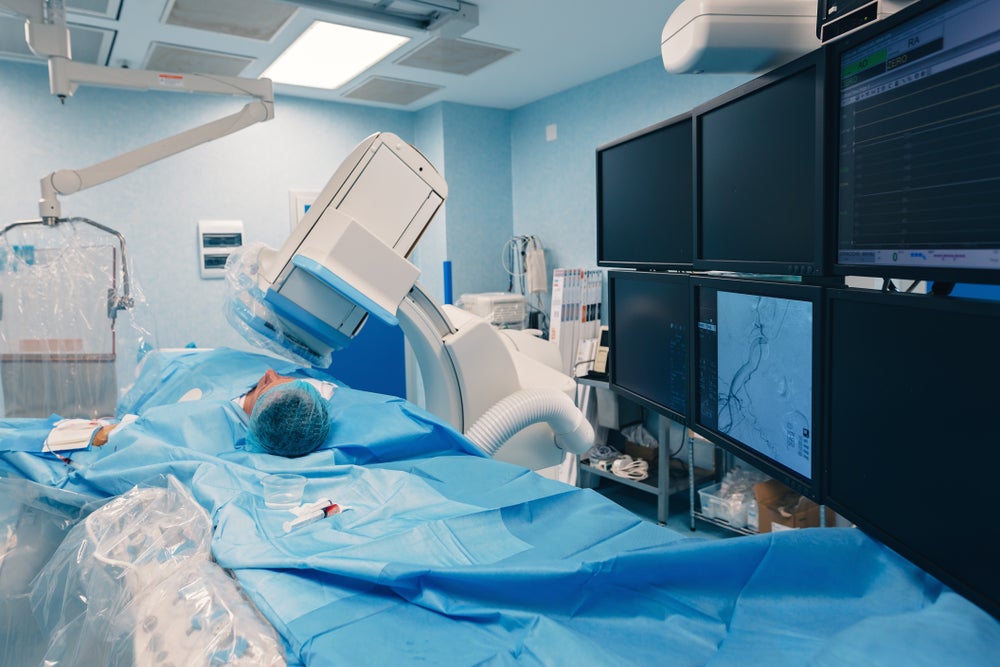
Nearly one in five people over the age of 65 experiences some form of cataract-related vision loss. In the USA alone, the percentage of the population aged 65 and over will increase from 13% to 20% between 2000 and 2030, according to the US Census Bureau.
Additional types of vision deterioration, less serious in scope but far greater in frequency, are the loss of near vision with age, presbyopia, and the loss of emmetropia, the inherent ability to focus light. Presbyopia is currently an inevitable result of ageing. From an initial accommodation ability of 18 diopters, loss becomes noticeable at around age 30 and progresses to less than two diopters for adults over 60.
The most common disease, ametropia, is the general classification of specific disease states: near-sightedness or myopia and far-sightedness or hyperopia. Myopia affects approximately 35% of the population.
Excellent therapies exist to treat cataract and ametropia. Artificial intraocular lenses (IOLs) made from silicones and acrylics for surgical replacement of the cataractous lens have existed for decades, with outstanding safety records. Current state-of-the-art therapies for presbyopia are multi-focal glasses or contact lenses. For ametropes, optical lenses, contact lenses, radial keratotomy, LASIK, anterior chamber implantable lenses and, recently, orthokeratology, all are excellent options for vision correction.
The emerging product profile is a single therapeutic device that replaces the cataractous lens, corrects for ametropia and, most importantly, effortlessly restores the ability to focus near and far. With the certainty of presbyopia and a high incidence of myopia, a truly innovative product such as a variable-power IOL has the potential to create an elective market for non-cataract patients.
ANATOMY, PHYSIOLOGY AND ETIOLOGY
How well do you really know your competitors?
Access the most comprehensive Company Profiles on the market, powered by GlobalData. Save hours of research. Gain competitive edge.

Thank you!
Your download email will arrive shortly
Not ready to buy yet? Download a free sample
We are confident about the unique quality of our Company Profiles. However, we want you to make the most beneficial decision for your business, so we offer a free sample that you can download by submitting the below form
By GlobalDataThe human eye is a remarkable organ that converges light using two primary elements, the cornea and lens, onto the retina, or more specifically the macula, for detailed vision. The convex outer surface of the cornea, the first focusing element, in conjunction with the great refractive index difference between air, 1.0, and corneal tissue, ~1.4, provides 75% of the total 60 diopter focusing power of the eye.
The human crystalline lens, the second element, is a bi-convex structure contained in a membranous capsular bag, suspended by ligamentous zonules attached to an annular ciliary muscle. While the lens contributes only 25% of the focusing power, the primary purpose is to provide variable power, allowing focusing of divergent light reflected from near objects. The crystalline lens originates from an invagination of the ectoderm, which differentiates into three types of structures.
The inner cell layer becomes the capsular bag, the inside posterior part of the invagination forms the nucleus of the lens, and the inside anterior cell layer forms lamellar structures around the nucleus. The cells of the lamellar structure express three types of proteins called crystallins.
Humans spend significantly more time observing objects relatively far than near. Requiring near constant muscle action to maintain focused vision is energetically unfavourable. Decrease in power or lens flattening is driven by passive action of the zonular fibres pulling on the lens edge and stretching it flatter. When the ciliary muscle contracts, the distance between the muscle and lens decreases, the zonules slacken, and the lens springs out to a more highly curved shape.
Cataract is a result of denaturation of crystalline proteins or delamination of the lamella from the nucleus and can be attributed to events such as: hydration, proliferative disorder, electromagnetic radiation including ultraviolet light and visible light, genetic disease and infection.
Presbyopia is attributed to continued proliferation of lamellar lens cells. This leads to increased density of the lens, increased size and reduced elasticity. The more rigid lens does not contribute its spring force, and the increase in lens diameter reduces the ability of zonules of constant length to tighten and flatten the lens.
MATERIAL CONSIDERATIONS
Some of the same material properties of traditional intraocular lenses (IOLs) translate to variable-power IOLs. Chief among these is refractive index. Surgical replacement of the lens is historically a traumatic surgery. However, recent advancements with instruments such as Bausch & Lomb’s TSV-25 system allow for removal of the diseased lens through a 25-gauge, 0.5mm diameter cannula. This hole is small enough that sutures are not required.
Though lens removal can be performed through a very small incision, a 2–3mm cut is required for implantation of current IOLs. Incision size is related to total IOL volume, and the IOL volume required in order to provide focusing is related to material refractive index.
Higher refractive index materials are more convergent, and smaller volume IOLs can be made. Material refractive index is also an additive property of its components. For materials that have a high amount of water, the effectiveness of the higher refractive index material is ameliorated by water having parity with the physiological environment.
IOLs come in different shapes and sizes, and the optical element can range from 4.5mm to 9mm in diameter, plus haptics. To squeeze the IOL through a 2–3mm incision, the lens is folded or compressed and pushed through a very small hole.
Materials must have some flexibility and toughness to withstand general forces over 600g and local shear forces far greater. For IOLs that change shape, they must also withstand repeated flexing, greater than 100,000 cycles.
Materials must also co-exist harmoniously with the body once implanted. Because the capsular bag is poorly perfused, tissue response presents a unique challenge. The greatest passive challenge is calcification of the IOL. Surface chemistries or contaminants can cause adsorption of endogenous molecules such as proteins and phospholipids. Free phosphorous from phospholipids can complex with calcium and precipitate as calcium phosphate, opacifying the IOL.
Alternatively, lens epithelial cells disrupted by surgery can proliferate across the surface of the IOL, causing opacification. Treatments such as mechanical boundaries, sharp edges and collagen coatings have been used to prevent posterior capsule opacification (PCO).
A final consideration is compatibility with other surgical techniques. For many, cataract is one aspect of ongoing ocular ailment. For other diseases such as retinal detachment, silicone oil is often used to reseat the retina. Low molecular weight components of the silicone oil can adsorb to the surface of the IOL, creating a secondary problem.
VARIABLE-FOCUSING IOLS
One relatively simple method of providing near and far vision is to create a static lens with a range of focal lengths. Similar to bi-focal contact lenses, multi-focal IOLs use different parts of one optic to converge reflected light from the same object in different places. Processing in the brain selects the most focused image. Examples of such lenses are Advanced Medical Optics (AMO) ReZoom and Alcon’s Acrysof ReSTOR.
ReSTOR is a new lens to market using traditional materials and is gaining rapid acceptance. To its benefit, it is readily fitted, similar to previous IOLs. However, when the light is broken into several images, some out of focus, some contrast is lost. Additionally, because of other similar multi-focal strategies such as multifocal contact lenses, monovision, using contact lenses to correct one eye for distance vision and one for near vision, and multi-focal LASIK, this approach is unlikely to result in lens replacement for non-cataract eyes.
The first FDA-approved accommodating IOL is the Eyeonics Crystalens. The Crystalens features two large, hinged, platelike haptics instead of the traditional thin wire or narrow plate haptics. The Crystalens makes use of the pressure differential created by contraction of the ciliary muscle to vault the lens forward. This provides a longer path to the retina, allowing focusing of more-divergent light, as is the case with reflections from near objects.
Initial claims for the Crystalens were up to 1 diopter of accommodation. However, several reports are highlighting 0.5 diopters of accommodation. Post-market studies also indicate that arching of the lens may be changing the power of the optic, assisting in positive clinical outcome.
Another single lens design originates from the German company Human Optics. The 1CU lens features four large plate-type haptics. However, these haptics are designed to fill the capsular bag. Ciliary muscle contraction acts on the haptics, vaulting the lens forward and allowing for convergence of near reflected light. Accommodation target is approximately 2 diopters, and human trials are currently underway.
FUTURE STRATEGIES
Dr Mona Sarfarazi was the first to patent a system for generating a change in optical system power due to relative motion of two optics. The concept is similar to other compound lens systems such as the telescope. Zonule tension flattens the bag. A force perpendicular to the optics is transmitted to the IOL.
Orthogonal force on the anterior and posterior faces of the capsular bag pushes the two optics together, reducing power. When the ciliary muscle contracts, the two lenses spring apart. Bausch & Lomb is collaborating with Dr Sarfarazi, and Visiogen is working with a similar design. Target accommodation for this lens system is 5 diopters. Both are either in human testing or clinical trial.
Though the two-lens systems are more representative of the action of the natural lens, combining zonule tension and spring action, the natural lens accommodates by altering its curvature. Several approaches are under evaluation.
One approach has been to use the empty capsular bag as a form or placing a pliable bag within the capsular bag to contain various injectable liquids. Pioneering materials have been tested by Jean-Marie Parel and the CSIRO in Australia. They have covered materials ranging from hydrogels to injectable branched silicones. Issues that have arisen are how to seal in the injected material, and how to generate optics of sufficient quality in situ.
A solution that combines elements of fluid-filled bags and displacement-driven IOLs was invented by Dr. Joshua Ben- Nun. In his design, the capsular bag is allowed to collapse after surgery, forming a diaphragm. The accommodating IOL is placed in front of the collapsed capsular bag.
Pressure on the lens due to ciliary muscle contraction pushes a liquid-filled optic against an orifice. A small part of the fluid optic is arched out into a highly curved lenticle, greatly increasing focusing power. This approach is also currently in human testing.
THE NEXT STEP
Considering it was once believed that light emanated from the eyes, ophthalmology has made tremendous strides in understanding the function and disease of the eye. This is enhanced by recent definitive proof of the mechanism of accommodation by new medical imaging techniques.
While the need for and feasibility of a simultaneous solution to the problems of ametropia, presbyopia, and cataract are clear, it is uncertain whether a tipping point in adoption and implementation of accommodating IOLs will be reached by current technologies in test, or whether these will feed critical learning for a transcendent device.







